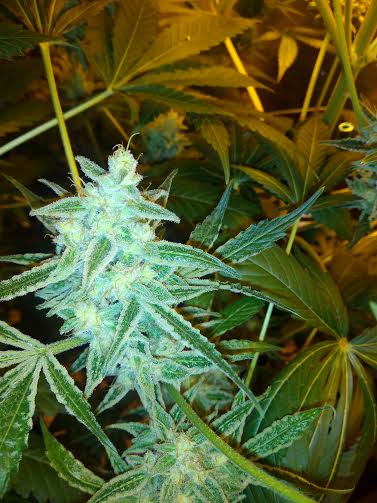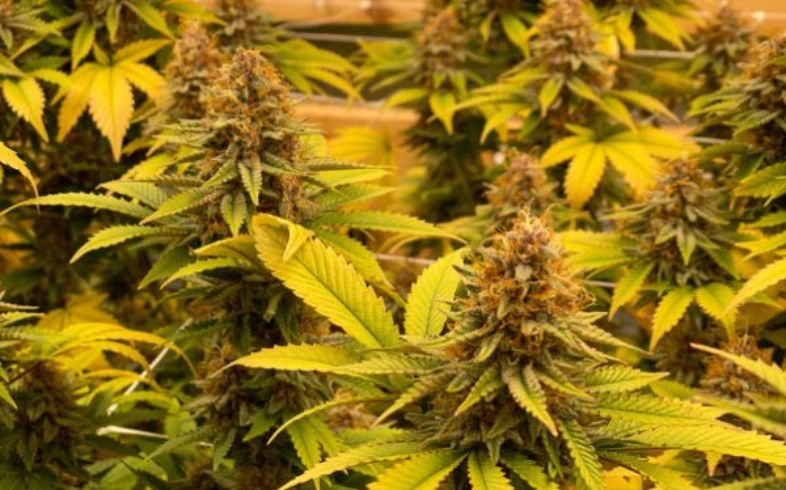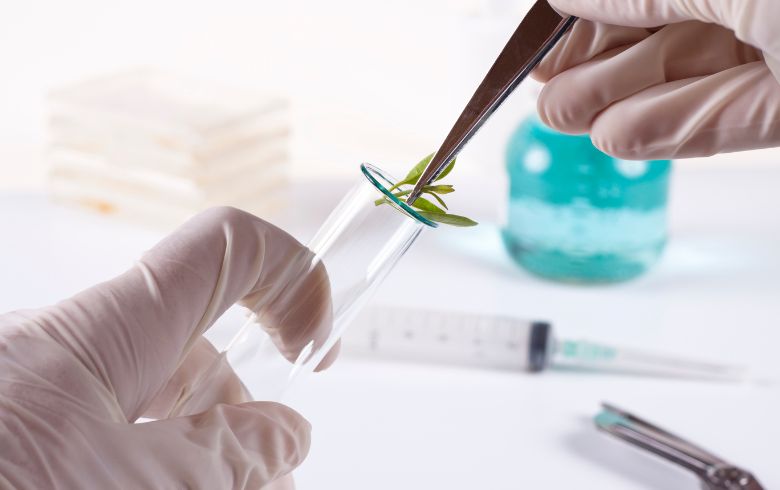Today’s article is a cannabis grow guide for beginners, with which you’ll be able to understand your plant’s life and harvest a top quality, amazing yield. Simply follow these steps!
The first thing you’ll need to do is pick the strain ( check out our Cannabis seeds – Buy Marijuana Seeds section) that you like the most. Not all weed has the same flavor, nor the same effect, and some strains prefer warm climates over cold ones and vice versa, so you’ll need to do your research when picking a seed.
 The second thing you’re going to need to do is decide if you’re going to grow indoors or outdoors. Not all cannabis plants are the same or act the same; some of them prefer to be grown indoors under lights, and some of them really excel when grown outdoors – indicas are generally better for indoor grows and sativas are better for outdoor grows due to how big they can grow and their long flowering period.
The second thing you’re going to need to do is decide if you’re going to grow indoors or outdoors. Not all cannabis plants are the same or act the same; some of them prefer to be grown indoors under lights, and some of them really excel when grown outdoors – indicas are generally better for indoor grows and sativas are better for outdoor grows due to how big they can grow and their long flowering period.
If you want to grow indoors, you can check out the article we have explaining everything step by step. Outdoors, plants simply need a lot of sunlight and water – just keep in mind that depending on your climate you’re going to wait to plant a specific strain.
Prepare a good substrate so that your plant’s roots can grow properly and absorb as much water and nutrients as possible – this is one of the keys for a successful grow. They’ll need a spongy, and aired out substrate rather than a compact one so they can breathe. If you’re growing in flowerpots all you have to do is fill them with quality substrate. If growing outdoors, you’ll need to dig a hole and mix the substrate in with the soil; if the soil is compact or like clay, then just use substrate.
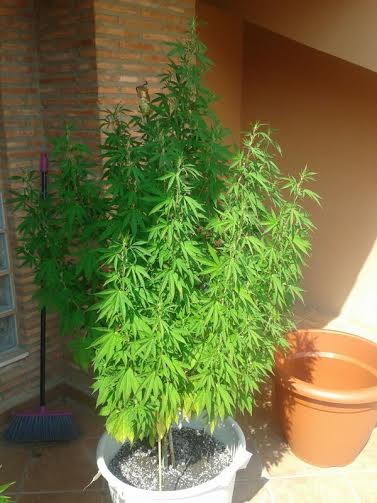 You need to keep in mind the kind of climate you live in when picking both seeds and substrate, as some substrates have higher water retention than others. If you use a substrate with a low retention rate in a hot area then it will dry up at least twice a day, and if you use one that retains a lot of humidity in a humid area then you plants roots will rot and die. You can go ahead and check out our article on the subject.
You need to keep in mind the kind of climate you live in when picking both seeds and substrate, as some substrates have higher water retention than others. If you use a substrate with a low retention rate in a hot area then it will dry up at least twice a day, and if you use one that retains a lot of humidity in a humid area then you plants roots will rot and die. You can go ahead and check out our article on the subject.
If you don’t use fertilizers then you’ll get less yield and most likely less quality. If you don’t want to get too aggressive when using nutrients then you can use powdered organic fertilizers such as worm hummus or bat guano, which will guarantee healthy and quality plants as long as you water them enough. If you don’t use anything then you’ll end up with some low-grade cannabis. Now, once you’ve prepared what you need you can start germinating your seeds!
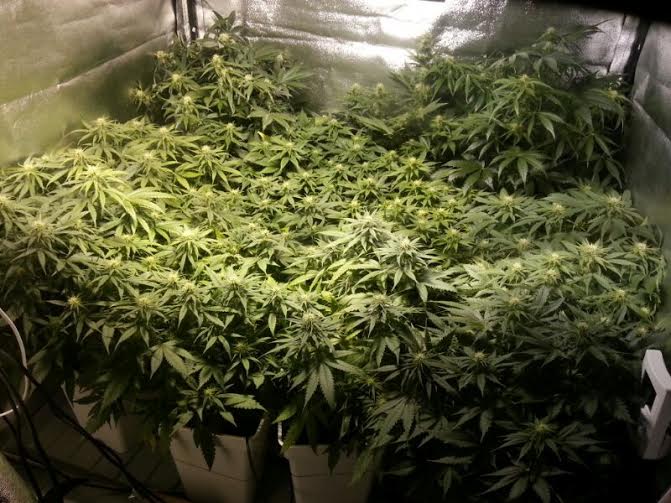 To germinate your seeds you’ll need to use the kitchen paper and Tupperware method, which is simple to do and guarantees an almost 100% germination rate. Once your seeds have germinated then you can plant them in soil. The best way is to place them in a small teku pot once the root has appeared, and then transplant them to a bigger flowerpot once they’ve grown a bit.
To germinate your seeds you’ll need to use the kitchen paper and Tupperware method, which is simple to do and guarantees an almost 100% germination rate. Once your seeds have germinated then you can plant them in soil. The best way is to place them in a small teku pot once the root has appeared, and then transplant them to a bigger flowerpot once they’ve grown a bit.
You’ll need to keep transplanting your plants as they grow; start with a 3L pot and every time you transplant you’ll need to use a pot that’s double the size – from 3L to 7L, from 7L to 11L etc. Go check out our article all about when and how to transplant your plants.
Now that you know when to transplant, it’s important to learn how to recognize the plant’s phases; vegetation, flowering, fattening and harvest time. Just by being able to tell these phases apart, you’re already 80% of the way to a successful grow – all you have to do is give your plants the nutrients they need in each phase.
In this article we’re going to explain each phase and what to do with your plants, so that you can have a healthy grow from start to finish.
 Vegetation:
Vegetation:
- This is the phase in which plants grow and prepare for the flowering period. Plants depend on the amount of light they get in as far as knowing which phase they need to move in to. When your plants receive a lot of hours of light a day (spring) they grow, and once those hours begin to decrease, plants will begin flowering. They start of as small seeds and rapidly turn into green giants. The size your plant can grow to will depend on various factors – if you grow indoors then small plants are more handy, whereas outdoors you can grow them as large as you want depending on your needs.
- Indoors, this phase takes around 20-25 days at 18h of light and 6 in the darkness when growing from seeds, and outdoors you can naturally grow them from spring until the start of summer. You can also plant in the winter in a greenhouse and artificial lighting at night so that they don’t flower and then take them out during the spring time; this makes for some monstrous plants that flower naturally during the summer. You can check out our article on when to plant cannabis so that you know what time of year you need to plant in and how to do so to get amazingly big plants.
- During this phase you need to use growth fertilizers that tend to have a nitrogen base and some rooting products so that your plants can absorb what you give them properly, and grow a strong root system.
Flowering:
- This is when plants begin showing their flowers – generally, people tend to plant feminized seeds so that they’re always female, but if you’re growing regular seeds you’re going to need to keep on top of them to find out which are male and which are female. You’ll need to remove males from your grow as soon as possible or they’ll pollinate all of your female plants and your weed will have seeds in it. Once in the flowering period, you’ll need to start using flowering fertilizers which tend to come with potassium and phosphorus in them. Your plants will slowly begin to grow one flower after another until they grow out long colas of buds – this is when you’ll need to begin the fattening period.
Bud Fattening:
- Once your plants have grown all of their flowers, they enter in a flower fattening stage in order to try and catch
 as much pollen as possible due to not having been pollinated earlier – the plants’ very nature pushes them to get bigger and bigger. In this phase, plants need a large amount of phosphorus and potassium, and using just a base fertilizer won’t be enough. You’ll need to use an organic or chemical fattener around a month after your plants have begun flowering.
as much pollen as possible due to not having been pollinated earlier – the plants’ very nature pushes them to get bigger and bigger. In this phase, plants need a large amount of phosphorus and potassium, and using just a base fertilizer won’t be enough. You’ll need to use an organic or chemical fattener around a month after your plants have begun flowering. - If you’re using organic fertilizers then you’ll need to use bat guano, which is easy to use and rather effective. All you have to do is give your plants two spoonfuls per 7L of substrate as soon as they begin flowering both indoors and outdoors. The difference is that in indoors you don’t need to repeat the dosage but outdoors you can repeat the dosage a month after the first one.
- If you use chemical fertilizers then you can pick from some PK 13-14 products that can be used all week, or PK 50-30 which is generally only used once a week. Whichever one you use, you’ll need to use sugars during the entire flowering period in order to fill the buds that you’re fattening – this will also allow for a better flavor and more resin.
How to know when to harvest:
- Once your plant simply can’t flower any more, the flowers will begin to get old. The way to recognize when a plant is ready for harvest is through the pistils and the resin. When the pistils are new they’re still white, and when they get older they start getting brown. Once most of them are brown, then you’ll need to start using pure water in your irrigation for at least two weeks so the plant can absorb what’s left in the soil and so that it doesn’t end up tasting like fertilizers. It’s easy to know when to harvest, but knowing when to stop using fertilizers is something that only experience can tell.
- Make sure that once you’ve harvested to dry and cure your plants properly – the quality of your final product depends on how well you’ve dried and cured your plants. You can check out our article on how to dry and cure your cannabis here.
Now that you have the theory, it’s time to put it into action. If you don’t want to start with seasonal plants, which need quite a lot of patience, you can start with autoflowering bulk seeds first that have more or less the same processes but they’re much faster and they don’t depend on light periods or anything like that. Let us know in the comments how you’re getting on with your grow!


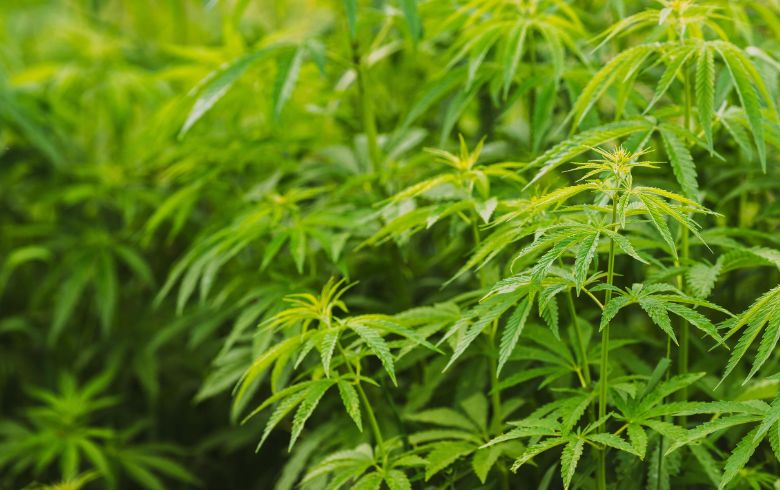
 Vegetation:
Vegetation:
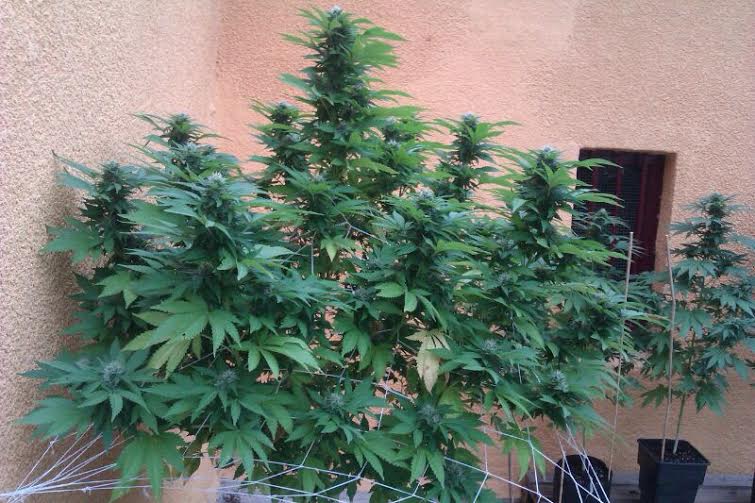 as much pollen as possible due to not having been pollinated earlier – the plants’ very nature pushes them to get bigger and bigger. In this phase, plants need a large amount of phosphorus and potassium, and using just a base fertilizer won’t be enough. You’ll need to use an organic or chemical fattener around a month after your plants have begun flowering.
as much pollen as possible due to not having been pollinated earlier – the plants’ very nature pushes them to get bigger and bigger. In this phase, plants need a large amount of phosphorus and potassium, and using just a base fertilizer won’t be enough. You’ll need to use an organic or chemical fattener around a month after your plants have begun flowering.